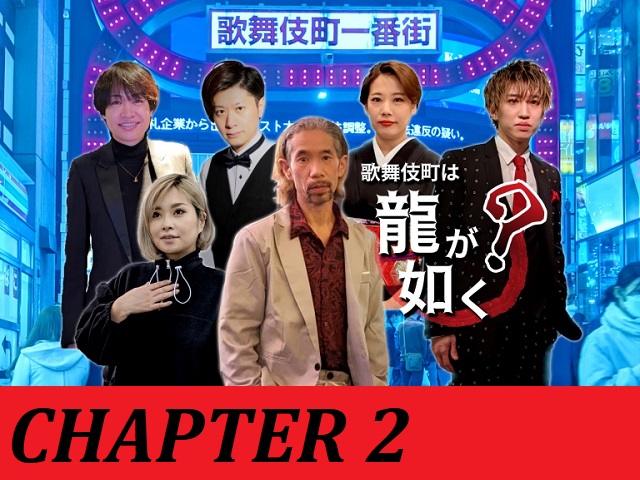
Mr. Sato continues his night out in Kabukicho, the real-world Kamurocho.
Recently our ace reporter, Mr. Sato, hit the streets to see if Kabukicho, the real-world Tokyo neighborhood that serves as the model for Kamurocho in Sega’s Yakuza/Ryu ga Gotoku/Like a Dragon video games series, is as dangerous as its video game counterpart. When we left off, Mr. Sato (dressed in his best Kiryu Kazama cosplay) had just finished Chapter 1: The Fate of Drunkards (as he decided to call the first stage of his investigative quest), and had been told by hostess bar mama Haruka that he should seek out a man named Naruse.
▼ Chapter 2: Towards the Gray Darkness
Following the directions Haruka had given him, Mr. Sato arrived at the Kabukicho Daikan Plaza Seiza Building.
The 10-story structure has some two-dozen drinking establishments inside of it, including a host club called Awake, and that’s where Mr. Sato was headed.
“I’m here to see Naruse,” Mr. Sato told the doorman, followed by “I’ll take a seat here and wait” once he was inside.
Mr. Sato spent a few moments admiring the décor, and then he heard a man’s voice say “I’d be happy to speak with you, Mr. Sato. That is your name, right?”
“I heard about you from Haruka, the mama at Club Haru. She said you wanted to ask me something?” Naruse said, easily flashing a welcoming smile with all the charm of a host club industry veteran.
“Yes. Tell me about Kabukicho,” Mr. Sato replied, adopting the broad yet straightforward conversational technique of a video game protagonist. Unfortunately, that’s not always the best communication style to use in real life, but Naruse handled the awkwardness with aplomb. “What sort of things would you like to know? I’m not sure where to start with just ‘Kabukicho.’”
“Ah, yeah, I guess not. Well, I’d like to know how Kabukicho was back in the old days,” Mr. Sato expanded, since Naruse has worked in the neighborhood for over 20 years. “I’m guessing that Kabukicho used to be a much more dangerous place than it is now.”
“I see,” Naruse said, adopting a pensive expression as he mentally looked back over that time.
Naruse: “If we’re talking about my line of work, back when I first started I’d say the hosts were harder partiers. They’d get really drunk sometimes, and it seemed like there was no end to fights between them.”
Mr. Sato: “Seriously? The hosts would get into fights with each other? Like, over stealing customers away from each other?”
Naruse: “Back in the day, most hosts were rough, thuggish guys. There were a lot of fights that started because of ‘urikake’ [credit sales].”
Mr. Sato: “Urikake?”
Naruse: “In the host industry, urikake is a system where, if the customer doesn’t have enough money to settle her bill at the end of the night, the host that was drinking with her pays off the rest of the balance. Then the customer is supposed to come back on a later date and pay back that amount. Sometimes, though, the customer wouldn’t have paid the amount back yet, but they’d find out she was drinking with a different host at a different bar, so then the hosts would get into it.”
Mr. Sato: “Ah, so the host who used his money to pay the customer’s bill, but hadn’t been paid back, would get upset.”
Naruse: “Right. Sometimes they’d be out on the street and see the customer walking around with a different host, and they’d confront them and say ‘Give me my money.’ Really, though, it’s the customer who’s causing the problem. Recently though there are hardly any hosts who start fights like that.”
Mr. Sato: “It sounds like it was a rougher era.”
Naruse: “Speaking of that, hosts used to go out on the street and tout for their clubs” [This practice is now prohibited in Kabukicho]
Mr. Sato: “Oh, yeah, I remember seeing a lot of hosts gathered in front of the Don Quijote store at the entrance to Kabukicho. People called them ‘the crows.’”
Naruse: “Don Quijote was like a battleground. Hosts would claim territory there, and if a new host showed up and started touting, there’d be fights. You’d also see tough guys purposely walk through the crowd with their date, and if a host talked to her, they’d get up in their face and say, ‘The hell you think you’re doing to my girl, huh?’”
Mr. Sato: “Whoa. Sounds like Kabukicho was a seriously sketchy place. So are things safer now?”
Naruse: “Hmm. Well, the dangerous parts were really noticeable, but that made them easy to spot too. There were strict rules about how people conducted themselves, but as long as you followed them, you usually wouldn’t run into any trouble. When there were fights, there was a certain amount of justification to them, and it was an era of a kind of masculine logic.”
Mr. Sato: “But now?”
Naruse: “It’s harder to spot where the danger comes from. I hear about people getting sucker punched, or getting doxed on social media as part of a beef. It feels like because there aren’t so many physically intimidating guys running around, some people go way overboard.”
Mr. Sato: “Instead of the safe and dangerous parts being easy to differentiate, it’s gotten gray, huh?”
Naruse: “Yeah, that’s my impression…Hey, if you want to hear some wild stories, there’s someone named Saito who’d have some for you.”
And so Mr. Sato saved his progress, and we’ll be back soon with Chapter 3: Crazy Town.
Related: Awake
Address: Tokyo-to, Shinjuku-ku, Kabuki-cho 1-2-7, basement level 1
Open 7 p.m.-midnight
Website
Photos ©SoraNews24
● Want to hear about SoraNews24’s latest articles as soon as they’re published? Follow us on Facebook and Twitter!
[ Read in Japanese ]

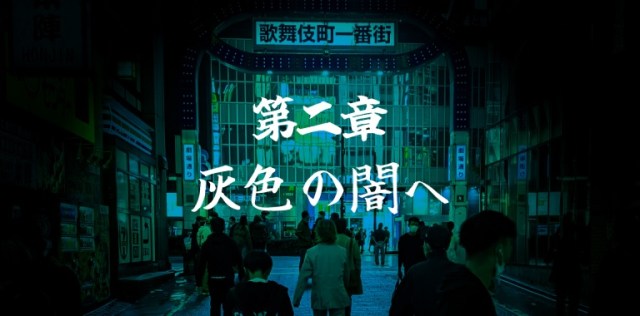
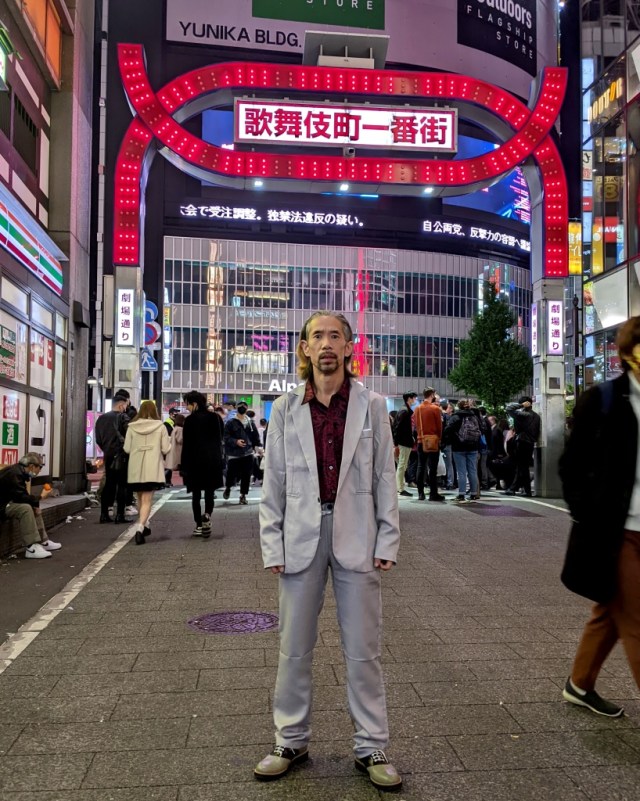

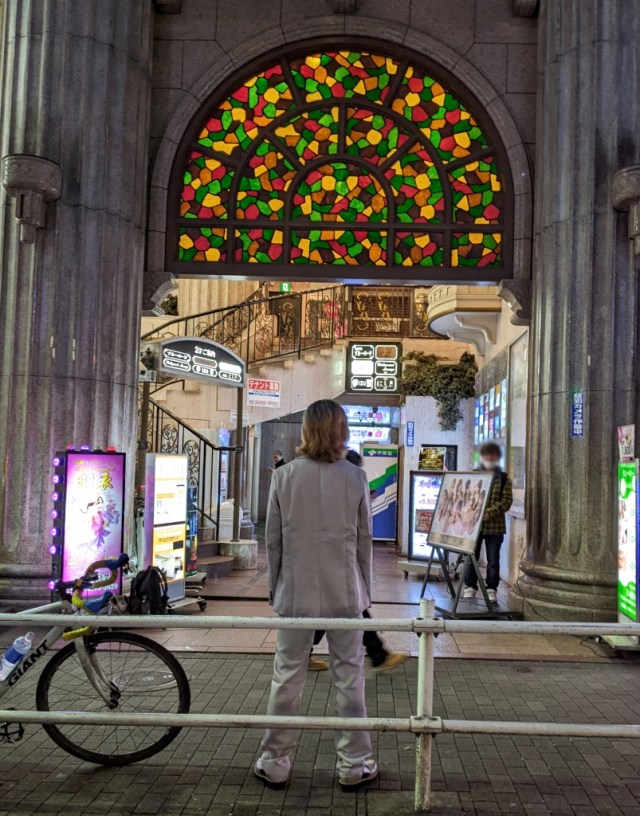
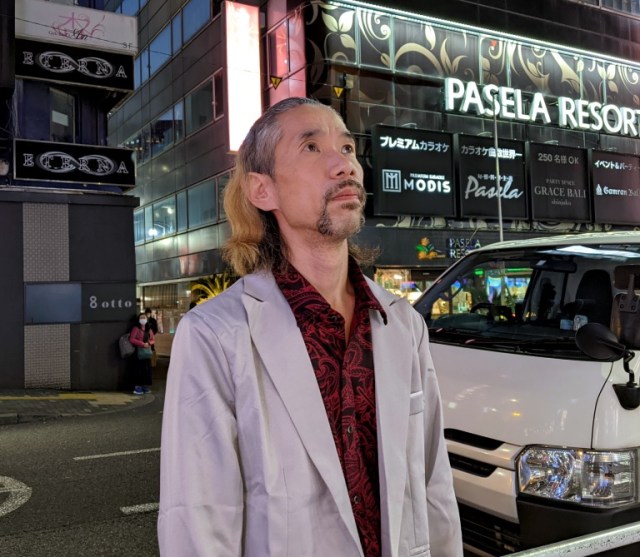
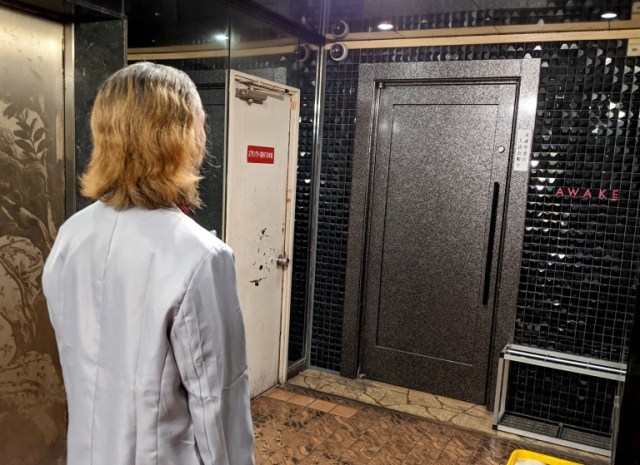
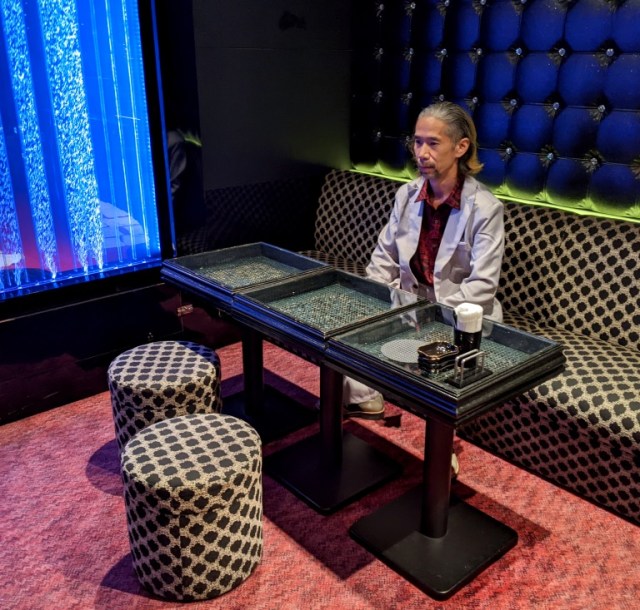
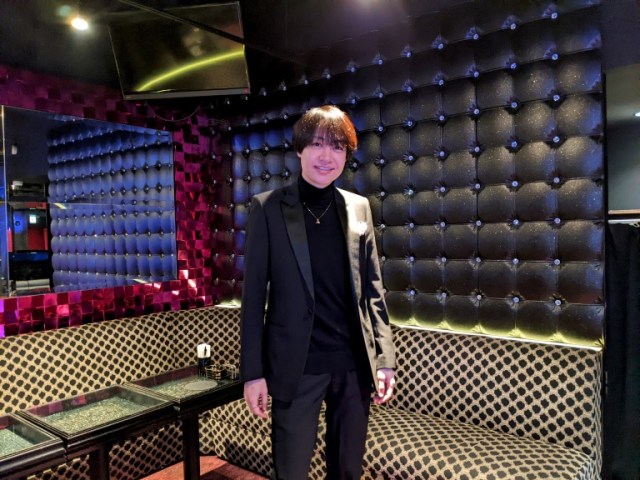

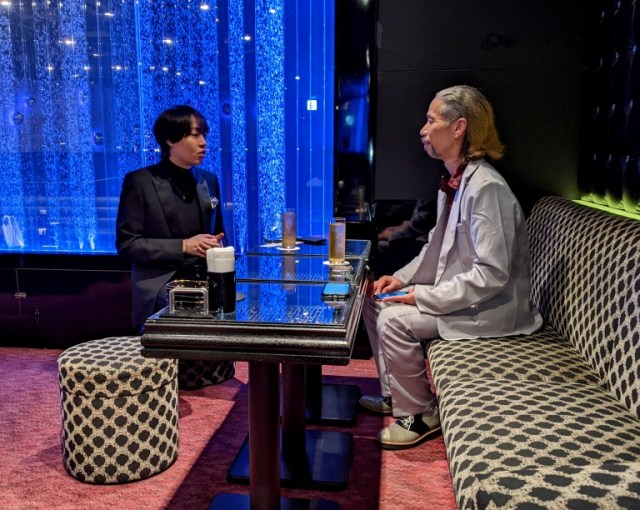

 How do Japan’s host club hosts get their professional names? We talk with five Kabukicho pros
How do Japan’s host club hosts get their professional names? We talk with five Kabukicho pros Is it possible to make a cheap senbero drinking party with your dog? 【Japan’s Best Home Senbero】
Is it possible to make a cheap senbero drinking party with your dog? 【Japan’s Best Home Senbero】 Can lightning strike twice? We return to Tokyo’s host photo studio to crown the RocketHost 【Poll】
Can lightning strike twice? We return to Tokyo’s host photo studio to crown the RocketHost 【Poll】 Mr. Sato broadens his home drinking horizons at Kaldi【Japan’s Best Home Senbero】
Mr. Sato broadens his home drinking horizons at Kaldi【Japan’s Best Home Senbero】 Can five middle-aged guys who graduated high school years ago still sing their school songs?
Can five middle-aged guys who graduated high school years ago still sing their school songs? How to order snacks on a Shinkansen bullet train in Japan
How to order snacks on a Shinkansen bullet train in Japan Demon Slayer: Kimetsu no Yaiba gets new roller coaster attractions and food at Universal Studios Japan
Demon Slayer: Kimetsu no Yaiba gets new roller coaster attractions and food at Universal Studios Japan New Nintendo Lego kit is a beautiful piece of moving pixel art of Mario and Yoshi【Photos】
New Nintendo Lego kit is a beautiful piece of moving pixel art of Mario and Yoshi【Photos】 Japan’s new difficult-to-drink-from beer glass protects your liver, but it’s a brutal experience
Japan’s new difficult-to-drink-from beer glass protects your liver, but it’s a brutal experience Hello, cosmetics! Clinique teams up with Hello Kitty this summer for first-time collaboration
Hello, cosmetics! Clinique teams up with Hello Kitty this summer for first-time collaboration Nintendo history you can feel – Super NES, N64, and GameCube controllers become capsule toys
Nintendo history you can feel – Super NES, N64, and GameCube controllers become capsule toys Which Studio Ghibli house would you most like to live in?
Which Studio Ghibli house would you most like to live in? Japan’s foreign population reaches historic milestone following largest-ever single-year surge
Japan’s foreign population reaches historic milestone following largest-ever single-year surge We check out the local flavors of the commonly confused Ome and Aomi areas of Tokyo in one day
We check out the local flavors of the commonly confused Ome and Aomi areas of Tokyo in one day Japanese gravure idol makes jaws drop with massive M-cup chest 【Pics & Videos】
Japanese gravure idol makes jaws drop with massive M-cup chest 【Pics & Videos】 “The most Delicious Cup Noodle in history” – Japan’s French Cup Noodle wins our heart【Taste test】
“The most Delicious Cup Noodle in history” – Japan’s French Cup Noodle wins our heart【Taste test】 Starbucks releases a cute Frappuccino and Unicorn Cake…but not in Japan
Starbucks releases a cute Frappuccino and Unicorn Cake…but not in Japan Kyoto Tower mascot termination reveals dark side behind cute Japanese characters
Kyoto Tower mascot termination reveals dark side behind cute Japanese characters McDonald’s Japan’s Soft Twist Tower: A phantom ice cream only sold at select branches
McDonald’s Japan’s Soft Twist Tower: A phantom ice cream only sold at select branches Yabai Ramen: What makes this Japanese ramen so dangerous?
Yabai Ramen: What makes this Japanese ramen so dangerous? Finally! Nintendo Japan expands Switch 8-bit controller sales to everybody, Online member or not
Finally! Nintendo Japan expands Switch 8-bit controller sales to everybody, Online member or not Japanese government wants to build luxury resorts in all national parks for foreign tourists
Japanese government wants to build luxury resorts in all national parks for foreign tourists To combat declining birth rate, Japan to begin offering “Breeding Visas” to foreigners
To combat declining birth rate, Japan to begin offering “Breeding Visas” to foreigners 10 things you should buy at 7-Eleven in Japan
10 things you should buy at 7-Eleven in Japan Studio Ghibli releases anime heroine cosplay dresses that are super comfy to wear
Studio Ghibli releases anime heroine cosplay dresses that are super comfy to wear Woman charged for driving suitcase without a license in Osaka
Woman charged for driving suitcase without a license in Osaka Studio Ghibli unveils My Neighbour Totoro miniature house model
Studio Ghibli unveils My Neighbour Totoro miniature house model Kyoto experiencing problems with foreign tourists not paying for bus fares, but not on purpose
Kyoto experiencing problems with foreign tourists not paying for bus fares, but not on purpose Fighting mild hunger with a Japanese soda that turns into jelly in the stomach【Taste test】
Fighting mild hunger with a Japanese soda that turns into jelly in the stomach【Taste test】 Studio Ghibli’s Howl’s Moving Castle tapestry unveiled in Japan for first time
Studio Ghibli’s Howl’s Moving Castle tapestry unveiled in Japan for first time McDonald’s new Happy Meals offer up cute and practical Sanrio lifestyle goods
McDonald’s new Happy Meals offer up cute and practical Sanrio lifestyle goods Sales of Japan’s most convenient train ticket/shopping payment cards suspended indefinitely
Sales of Japan’s most convenient train ticket/shopping payment cards suspended indefinitely Sold-out Studio Ghibli desktop humidifiers are back so Totoro can help you through the dry season
Sold-out Studio Ghibli desktop humidifiers are back so Totoro can help you through the dry season Japanese government to make first change to romanization spelling rules since the 1950s
Japanese government to make first change to romanization spelling rules since the 1950s Foreigner’s request for help in Tokyo makes us sad for the state of society
Foreigner’s request for help in Tokyo makes us sad for the state of society Ghibli founders Toshio Suzuki and Hayao Miyazaki contribute to Japanese whisky Totoro label design
Ghibli founders Toshio Suzuki and Hayao Miyazaki contribute to Japanese whisky Totoro label design Doraemon found buried at sea as scene from 1993 anime becomes real life【Photos】
Doraemon found buried at sea as scene from 1993 anime becomes real life【Photos】 Tokyo’s most famous Starbucks is closed
Tokyo’s most famous Starbucks is closed Princesses, fruits, and blacksmiths: Study reveals the 30 most unusual family names in Japan
Princesses, fruits, and blacksmiths: Study reveals the 30 most unusual family names in Japan Creator of Japan’s first pole dancing manga talks with our pole-dancing reporter【Interview】
Creator of Japan’s first pole dancing manga talks with our pole-dancing reporter【Interview】 Combination host club/bookstore proposed for Tokyo’s liveliest nightlife neighborhood
Combination host club/bookstore proposed for Tokyo’s liveliest nightlife neighborhood Mr. Sato gets a friend request from Yusaku Maezawa again, this time spells own name right
Mr. Sato gets a friend request from Yusaku Maezawa again, this time spells own name right A visit to one of Japan’s motorcycle Shinto shrines
A visit to one of Japan’s motorcycle Shinto shrines Mr. Sato returns to the line, waits three nights for an iPhone 11
Mr. Sato returns to the line, waits three nights for an iPhone 11 People of the world, brace yourselves: Mr. Sato… has a twin!
People of the world, brace yourselves: Mr. Sato… has a twin! Tokyo store that only sells black shirts sheds light on why it’s opening mid-pandemic
Tokyo store that only sells black shirts sheds light on why it’s opening mid-pandemic Mr. Sato angers the potato gods of Kogane No Potatorado restaurant
Mr. Sato angers the potato gods of Kogane No Potatorado restaurant Red light district sushi restaurant in Tokyo shows us just how wrong we were about it
Red light district sushi restaurant in Tokyo shows us just how wrong we were about it Mr. Sato becomes a Tokyo host club host for one night, and you can drink with him!
Mr. Sato becomes a Tokyo host club host for one night, and you can drink with him! Mr. Sato went to Ganguro Cafe and discovered his beautiful inner gyaru 【Pics】
Mr. Sato went to Ganguro Cafe and discovered his beautiful inner gyaru 【Pics】 What happens when a single woman joins a Japanese host club bus tour around Tokyo?
What happens when a single woman joins a Japanese host club bus tour around Tokyo? Our Japanese writers were taken to a mystery destination for their year-end party
Our Japanese writers were taken to a mystery destination for their year-end party Mr. Sato takes a stroll in his USB Pollen Blocker: “Felt great but it was a struggle to order coffee”
Mr. Sato takes a stroll in his USB Pollen Blocker: “Felt great but it was a struggle to order coffee” Gunma’s yaki manju, unknown to most Japanese people, are the best manju we’ve ever had
Gunma’s yaki manju, unknown to most Japanese people, are the best manju we’ve ever had
Leave a Reply